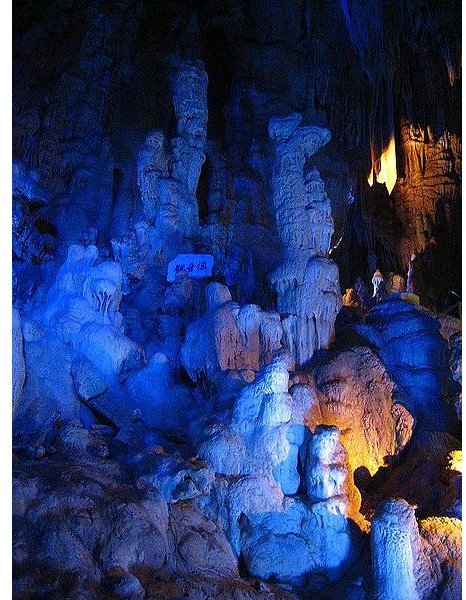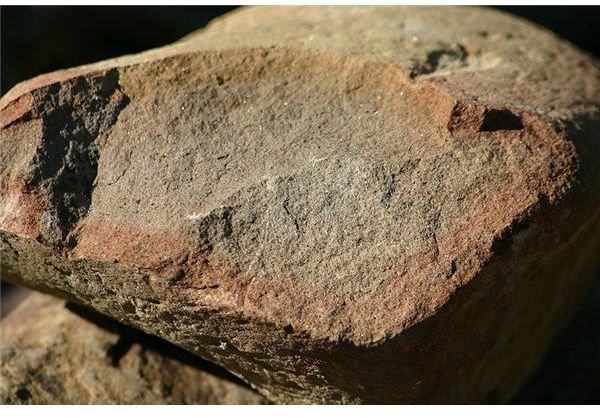What is Chemical Weathering in Rocks? Types: Oxidation, Hydration, Hydrolysis, and Dissolution
What is Chemical Weathering?
Chemical reactions in general happen when something is out of equilibrium with its surrounding environment. Chemical weathering is the process where rocks and minerals, which originally formed deep underground at much higher temperatures and pressures, gradually transform into different chemical compounds once they are exposed to air and water at the surface. The farther out of equilibrium a particular mineral is, the faster it will weather. In general, the new chemical forms are structurally weaker than the original rock, which causes the rock to eventually disintegrate.
Types of Chemical Weathering
There are three basic types of chemical reactions that cause four types of chemical weathering of rocks. Dissolution and hydrolysis are caused by reactions with acids. Hydration is the absorption of water. Oxidation is reaction with oxygen.
1. Acid Reactions
Acids are chemical compounds that produce H+ ions when dissolved in water. The stronger the acid, the more H+ ions they produce. Acids can react with any rock mineral that has other positive ions, like Ca++, Na+, or K+, by taking their place - which changes the chemical composition of the mineral and disrupts its atomic structure.
The most important natural acid is carbonic acid (H2CO3), which forms from carbon dioxide and water (CO2 and H2O). Others include sulfuric acid (H2SO4) and hydrofluoric acid (HF) which mainly come from volcanic eruptions.

- In hydrolysis, silicate and carbonate minerals transform into new minerals, principally clay minerals which have a sheetlike structure similar to mica. Both the chemical composition and crystalline structure become completely different.
- In dissolution, the acid completely dissolves the original rock, leaving nothing solid behind. For example, the gradual action of carbonic acid on limestone (main mineral: calcite, or CaCO3) over a very long timespan is responsible for all of the world’s spectacular limestone caves.
.
2. Hydration
The term ‘hydration’ refers to the absorption of water. The H+ and OH- ions of water incorporate themselves into the atomic structure of a mineral to form a new version of it called a hydrate. If the original mineral had a chemical formula of X, the new suite of minerals will have chemical formulas of X . _n_H2O. For example, anhydrite (CaSO4) exposed to water hydrates into gypsum (CaSO4 . 2H2O).
3. Oxidation
Oxidation is where oxygen from the atmosphere reacts with metal elements in the rocks to form oxides. The most common metal involved is iron. It reacts with oxygen to form iron oxide minerals such as hematite (Fe2O3) or, if water is present which it often is, hydration occurs in conjunction to form limonite (Fe2O3 . _n_H2O). Oxide minerals tend to be structurally weak and easily crumbled.
Factors Affecting Chemical Weathering
- Mineral Composition: Rocks composed of minerals farther out of equilibrium with surrounding conditions will undergo faster chemical weathering. For silicate minerals, weathering rate matches up well with Bowen’s reaction series. Minerals with more positive ions for acid to attack will also weather faster than minerals without.
- Soil/Vegetation Cover: Plant roots grow into the joints of rocks creating cracks which allow more water to seep through and increase chemical reaction. Plants also give off more carbon dioxide, creating a higher concentration in soil than the surrounding air.
- Climate: Atmospheric conditions like temperature and rainfall affect the rate of chemical reactions.
- Relief: Slope processes like landslides or slumps result in exposure of more of the rock’s surface to chemical weathering.
- Human Activity: Chemical pollutants and activities like mining disturb the chemical homeostasis of the environment.
Reference and Image Credits
Plummer, Charles C. and David McGeary. Physical Geology 5th ed. Wm. C. Brown Publishers. 1991.
Chemically weathered rock by Pollinator, used under CC-A-SA-3.0 unported license
Abukuma-do Cave by Brian Adler, public domain
This post is part of the series: The Processes of Weathering in Geology
Rocks at the Earth’s surface break down over time through weathering. Mechanical weathering breaks them into smaller pieces with physical forces, while chemical weathering transforms their constituent minerals into different chemical forms. The end result is called soil. Learn the details here.
